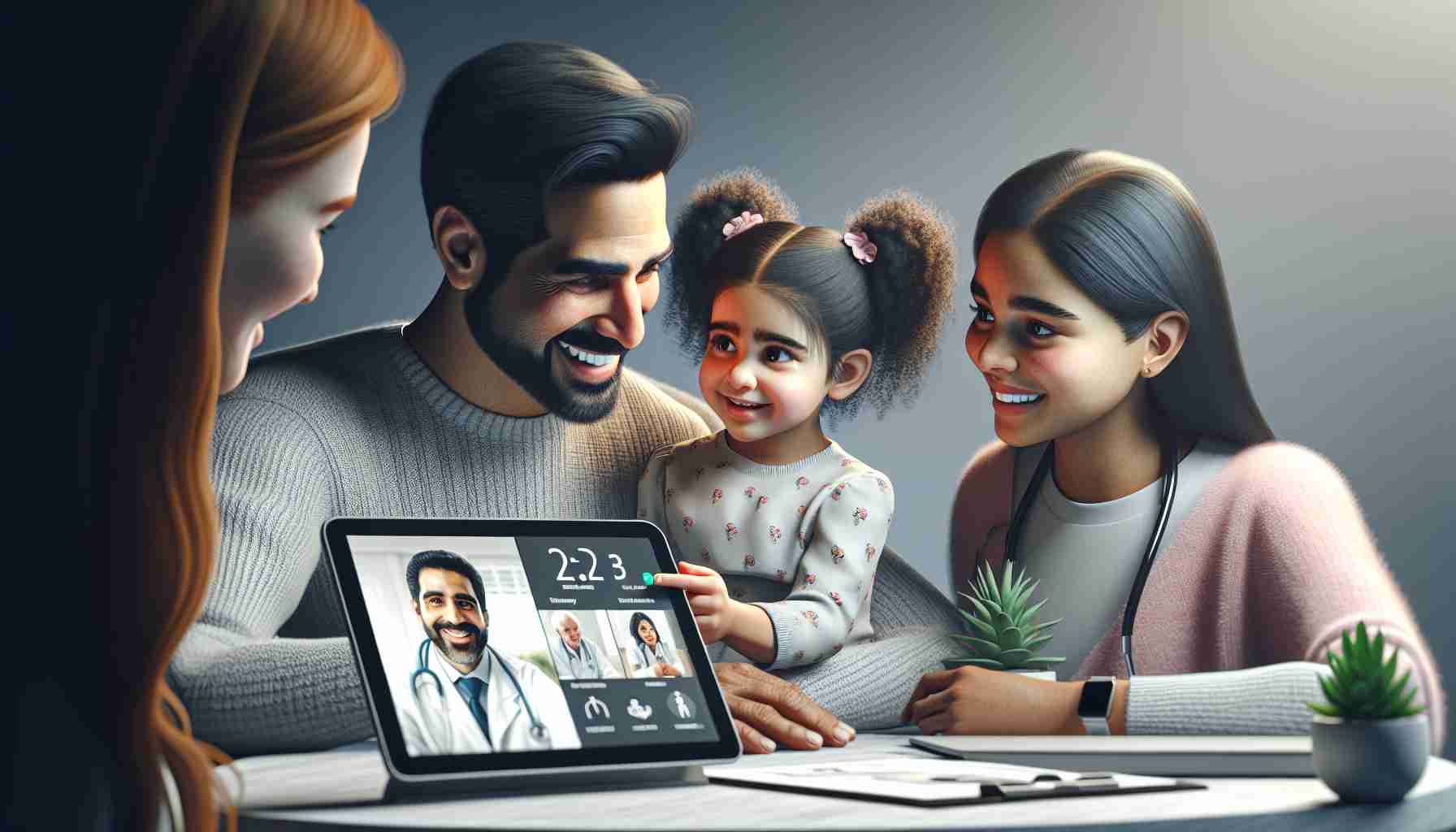Τηλεϊατρική: Μια Βολική Επιλογή για τα Παιδιά, Αλλά Όχι Πλήρης Αντικατάσταση
Recent research from Kaiser Permanente, published in JAMA Health Forum, has shed light on the use of telemedicine for pediatric care. While it offers significant convenience for parents, it may not always substitute the necessity of an in-person medical examination.
Conducted by esteemed researchers, the study explored the effectiveness of telephone and video consultations for children, involving over 780,000 pediatric visits in Kaiser Permanente Northern California in 2022. The findings reveal that while telemedicine meets most children’s medical needs, about 10% of cases required a subsequent in-person visit. This follow-up often occurred within just two days of the initial telehealth appointment.
The significance of face-to-face interaction, particularly for children who may struggle to articulate their symptoms, remains essential. A physical examination is critical for diagnosing common ailments like infections. These insights were underscored by Scott Casey, MD, emphasizing that telemedicine should not inadvertently lead to emergency department visits.
According to Dan Parry, MD, telemedicine can successfully address some health issues, but conditions such as ear pain or respiratory illnesses may necessitate in-person assessments. The study also highlighted that emergency department visits were slightly more frequent following telemedicine, though the increase was minor.
Despite the increased utilization of telemedicine since 2016, especially during the pandemic, the study reassuringly notes that virtual care does not contribute significantly to hospital overcrowding. As telemedicine continues to evolve, this research encourages informed decision-making, helping parents and pediatricians determine the best type of care for each case.
Η Ανεξερεύνητη Δυναμική της Τηλεϊατρικής και η Επίδρασή της καινοτομίες στη Μελλοντική Υγειονομική Φροντίδα
In the wake of a transformative era for digital healthcare, telemedicine has surged as a pivotal player. While recent discussions focus largely on its convenience, there’s a broader spectrum of possibilities and challenges that telemedicine introduces, particularly in pediatrics and beyond.
Η Υπόσχεση της Τηλεϊατρικής για τη Μελλοντική Υγειονομική Φροντίδα
Telemedicine offers revolutionary prospects for healthcare accessibility. By breaking geographical barriers, it provides medical services to remote areas with limited healthcare facilities—a boon for global health equity. Patients save time and resources, reducing the hassle of travel and long waits in crowded medical facilities.
Another potential innovation includes leveraging AI and data analytics to personalize telehealth experiences. With algorithms tailored to analyze patient data, telemedicine can deliver more accurate and efficient diagnostics, potentially predicting health issues before they become critical.
Προκλήσεις και Αντιπαραθέσεις στην Αρένα της Τηλεϊατρικής
However, the rapid adoption of telemedicine does not come without its hurdles. Data privacy remains a contentious topic, as the increased digital exchange of personal health information raises concerns about unauthorized access and breaches.
Moreover, the digital divide presents a significant challenge—many families, especially in underdeveloped regions, lack the necessary technology or internet connectivity to participate in telehealth services. This leaves a portion of the population underserved and exacerbates health disparities.
Critics also argue that the impersonal nature of virtual consultations may lead to misunderstandings or oversights in diagnosing conditions. What’s the trade-off between convenience and comprehensive care? Does the potential rapid access to physicians counterbalance the risk of missing crucial physical examination nuances?
Το Δίκοπο Μαχαίρι: Πλεονεκτήματα και Μειονεκτήματα
The advantages of telemedicine include increased accessibility, streamlined follow-ups, and the potential reduction in healthcare costs. It can also empower patients with more immediate engagement in their health management and a broader selection of specialists, irrespective of location.
On the downside, healthcare providers worry about over-reliance on remote consultations, which might inadvertently lead to misdiagnoses if physical exams are overlooked. Additionally, the necessary technological infrastructure may pose financial strains on healthcare systems and patients alike.
Ο Δρόμος Μπροστά για την Τηλεϊατρική—Μια Ισορροπημένη Προσέγγιση
As telemedicine rapidly integrates into the healthcare landscape, the question remains: how can we strike a balance that maximizes benefits while minimizing drawbacks? Continued research and technological advancements are imperative to address current limitations and optimize telehealth’s effectiveness.
For those interested in exploring more about digital health transformations and the future of healthcare, consider visiting World Health Organization and HealthIT.gov for comprehensive insights.
Telemedicine is an evolving field with the potential to redefine healthcare delivery. By confronting its challenges head-on and embracing its innovations, we can ensure a future where optimal health services are within reach of everyone, regardless of where they live.
